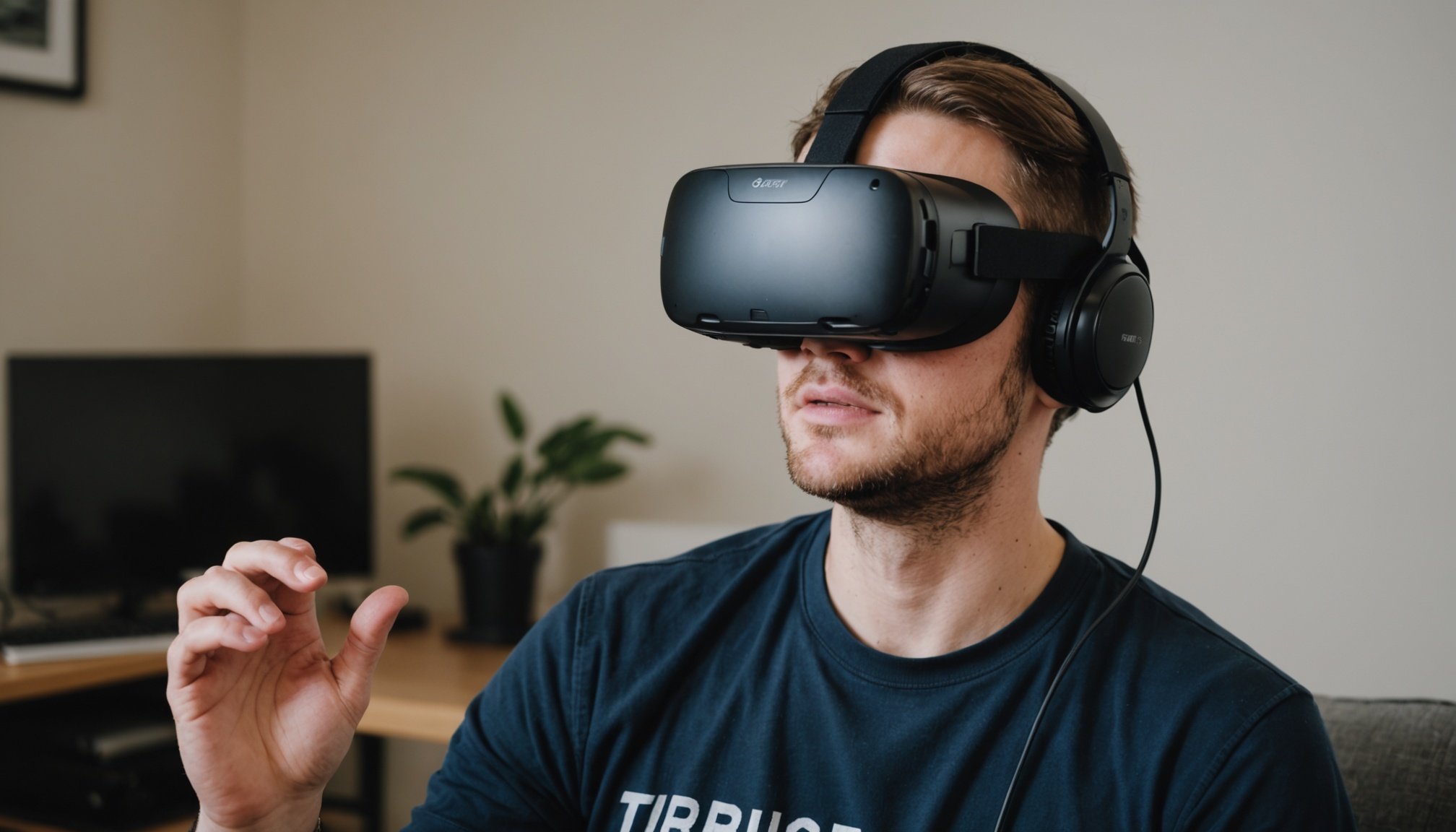Unlocking Healing: The Transformative Impact of Virtual Reality Therapy on PTSD Patients
Understanding PTSD and Traditional Treatment Methods
Post-Traumatic Stress Disorder (PTSD) is a complex and debilitating condition that arises after an individual experiences or witnesses a traumatic event. Symptoms can include flashbacks, severe anxiety, and uncontrollable thoughts about the event. Traditional treatment methods for PTSD often involve cognitive-behavioral therapy (CBT), medication, and in some cases, exposure therapy. However, these methods can be limiting for some patients, as they may struggle to confront their traumas in a real-world setting or may not respond well to conventional therapeutic approaches.
The Emergence of Virtual Reality Therapy
Virtual reality (VR) therapy has emerged as a groundbreaking and innovative treatment option for PTSD patients. This technology leverages immersive and interactive virtual environments to simulate real-life scenarios, allowing patients to confront and process their traumatic experiences in a controlled and safe setting.
Also to discover : Designing a Secure and Impactful Home Fitness Routine for Seniors: A Comprehensive Guide
How Virtual Reality Therapy Works
Virtual reality therapy typically involves the use of a VR headset and specialized software to create an immersive environment. Here’s a detailed look at the process:
- Initial Assessment: Before starting VR therapy, patients undergo a thorough assessment to identify the specific triggers and symptoms associated with their PTSD.
- Customized Environments: Based on the assessment, therapists create customized virtual environments that mimic the real-world scenarios that trigger the patient’s PTSD symptoms.
- Exposure Therapy: Patients are gradually exposed to these virtual environments, starting with less intense scenarios and gradually increasing the intensity. This controlled exposure helps patients become desensitized to their triggers and learn coping mechanisms.
- Real-Time Feedback: Therapists can monitor the patient’s physiological and emotional responses in real-time, providing immediate feedback and support.
- Post-Session Analysis: After each session, therapists and patients review the experience, discussing what was learned and how to apply these insights in real-life situations.
The Benefits of Virtual Reality Therapy for PTSD Patients
Enhanced Immersion and Engagement
Virtual reality therapy offers an unparalleled level of immersion, engaging multiple senses simultaneously. This multisensory experience enhances emotional engagement and makes the therapeutic process more effective.
Also to see : Crafting Your Ultimate Self-Care Routine: Boost Your Mental Health with These Proven Strategies
- Example: A patient with PTSD from a combat experience might be placed in a virtual environment that simulates the sounds, sights, and even smells of a battlefield. This immersive experience helps the patient confront their trauma in a way that traditional therapy might not be able to replicate.
Increased Safety and Control
One of the significant advantages of VR therapy is the safety and control it provides. Patients can confront their traumas without the risk of real-world harm, and therapists can adjust the intensity of the experience based on the patient’s comfort level.
- Quote: “Virtual reality therapy allows us to create a safe space for patients to confront their traumas. It’s a controlled environment where we can gradually increase the intensity, ensuring the patient feels safe and supported throughout the process,” says Dr. Jane Smith, a leading researcher in VR therapy.
Personalized Treatment Plans
VR therapy can be tailored to meet the specific needs of each patient. Here are some ways personalized treatment plans are implemented:
- Customized Scenarios: Each patient’s virtual environment is designed based on their unique experiences and triggers.
- Adjustable Intensity: The intensity of the virtual scenarios can be adjusted in real-time to ensure the patient is not overwhelmed.
- Integration with Other Therapies: VR therapy can be used in conjunction with other therapeutic methods, such as CBT and medication, to create a comprehensive treatment plan.
Clinical Evidence and Research
Numerous studies have demonstrated the efficacy of VR therapy in treating PTSD and other anxiety disorders.
Key Findings
- Reduced Symptoms: Research has shown that patients who undergo VR therapy experience significant reductions in PTSD symptoms, including flashbacks and anxiety.
- Improved Emotional Regulation: VR therapy helps patients better regulate their emotions and develop coping mechanisms to deal with traumatic memories.
- Long-Term Benefits: The benefits of VR therapy can be long-lasting, with patients showing sustained improvement in their mental health outcomes over time.
Table: Comparison of Traditional and Virtual Reality Therapy for PTSD
| Aspect | Traditional Therapy | Virtual Reality Therapy |
|---|---|---|
| Immersion | Limited immersion; relies on patient’s imagination and verbal descriptions. | High level of immersion; engages multiple senses simultaneously. |
| Safety | Patients may feel uncomfortable or unsafe confronting traumas in real-world settings. | Provides a safe and controlled environment for exposure therapy. |
| Personalization | Can be less personalized due to the lack of real-time feedback and adjustment. | Highly personalized; scenarios and intensity can be adjusted in real-time. |
| Engagement | May result in lower patient engagement due to the abstract nature of the therapy. | High patient engagement due to the immersive and interactive nature of the therapy. |
| Clinical Evidence | Well-established but may have limitations in treating certain patients. | Growing body of research showing significant efficacy in treating PTSD and anxiety disorders. |
| Integration with Other Therapies | Often used as a standalone treatment. | Can be integrated with other therapies like CBT and medication for a comprehensive approach. |
Practical Insights and Actionable Advice
For patients considering VR therapy, here are some practical insights and actionable advice:
Finding the Right Therapist
- Look for Experience: Ensure the therapist has experience in VR therapy and treating PTSD.
- Check Credentials: Verify the therapist’s credentials and certifications in VR therapy.
Preparing for Sessions
- Open Communication: Maintain open communication with your therapist about your comfort level and any concerns.
- Consistency: Attend sessions regularly to maximize the benefits of VR therapy.
Integrating VR Therapy into Daily Life
- Mindfulness Practices: Practice mindfulness and relaxation techniques learned during VR therapy in your daily life.
- Journaling: Keep a journal to track your progress and reflect on your experiences.
The Future of Virtual Reality in Mental Health Treatment
As technology continues to evolve, the potential of VR therapy in treating mental health disorders is vast. Here are some emerging trends and future directions:
Augmented Reality Integration
- Blending Real and Virtual Worlds: Augmented reality (AR) can be integrated with VR to create more dynamic and interactive therapeutic environments.
- Example: AR can be used to overlay virtual objects or scenarios onto real-world settings, enhancing the therapeutic experience.
Expanding Applications
- Other Mental Health Disorders: VR therapy is being explored for treating other mental health conditions such as eating disorders, stress disorders, and anxiety disorders.
- Quote: “The future of VR therapy is incredibly promising. We’re seeing applications beyond PTSD, into areas like social anxiety and even physical rehabilitation,” notes Dr. John Doe, a pioneer in VR therapy research.
Virtual reality therapy represents a significant leap forward in the treatment of PTSD and other mental health disorders. By offering an immersive, safe, and highly personalized therapeutic experience, VR therapy is transforming the way we approach mental health treatment. As research continues to validate its efficacy, it is clear that VR therapy will play an increasingly important role in the future of health care.
In the words of a patient who has undergone VR therapy, “It’s like I finally found a way to confront my demons in a way that feels real but also safe. It’s been life-changing.” This testament underscores the transformative impact of VR therapy and its potential to unlock healing for countless individuals struggling with PTSD.











